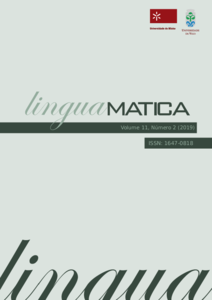Multidimensional strategy for the selection of machine translation candidates for post-editing
Abstract
An efficient integration of a machine translation (MT) system within a translation flow entails the need to distinguish between sentences that benefit from MT and those that do not before they are presented to the translator. In this work we question the use of Krings' (2001) post-editing effort dimensions separately to classify sentences into suitable for translation or for post-editing when training predictions models and propose a multidimensional strategy instead. We collect measurements of three effort parameters, namely, time, number of post-edited words and perception of effort, as representative of the three dimensions (temporal, technical and cognitive) in a real post-editing task. The results show that, although there are correlations between the measurements, the effort parameters differ in the classification of a considerable number of sentences. We conclude that the multidimensional strategy is necessary to estimate the overall post-editing effort.
Copyright (c) 2019 Ona de Gibert, Nora Aranberri

This work is licensed under a Creative Commons Attribution 4.0 International License.
Authors who publish with this journal agree to the following terms:
- Authors retain copyright and grant the journal right of first publication with the work simultaneously licensed under a Creative Commons Attribution License that allows others to share the work with an acknowledgement of the work's authorship and initial publication in this journal.
- Authors are able to enter into separate, additional contractual arrangements for the non-exclusive distribution of the journal's published version of the work (e.g., post it to an institutional repository or publish it in a book), with an acknowledgement of its initial publication in this journal.
- Authors are permitted and encouraged to post their work online (e.g., in institutional repositories or on their website) prior to and during the submission process, as it can lead to productive exchanges, as well as earlier and greater citation of published work (See The Effect of Open Access).













